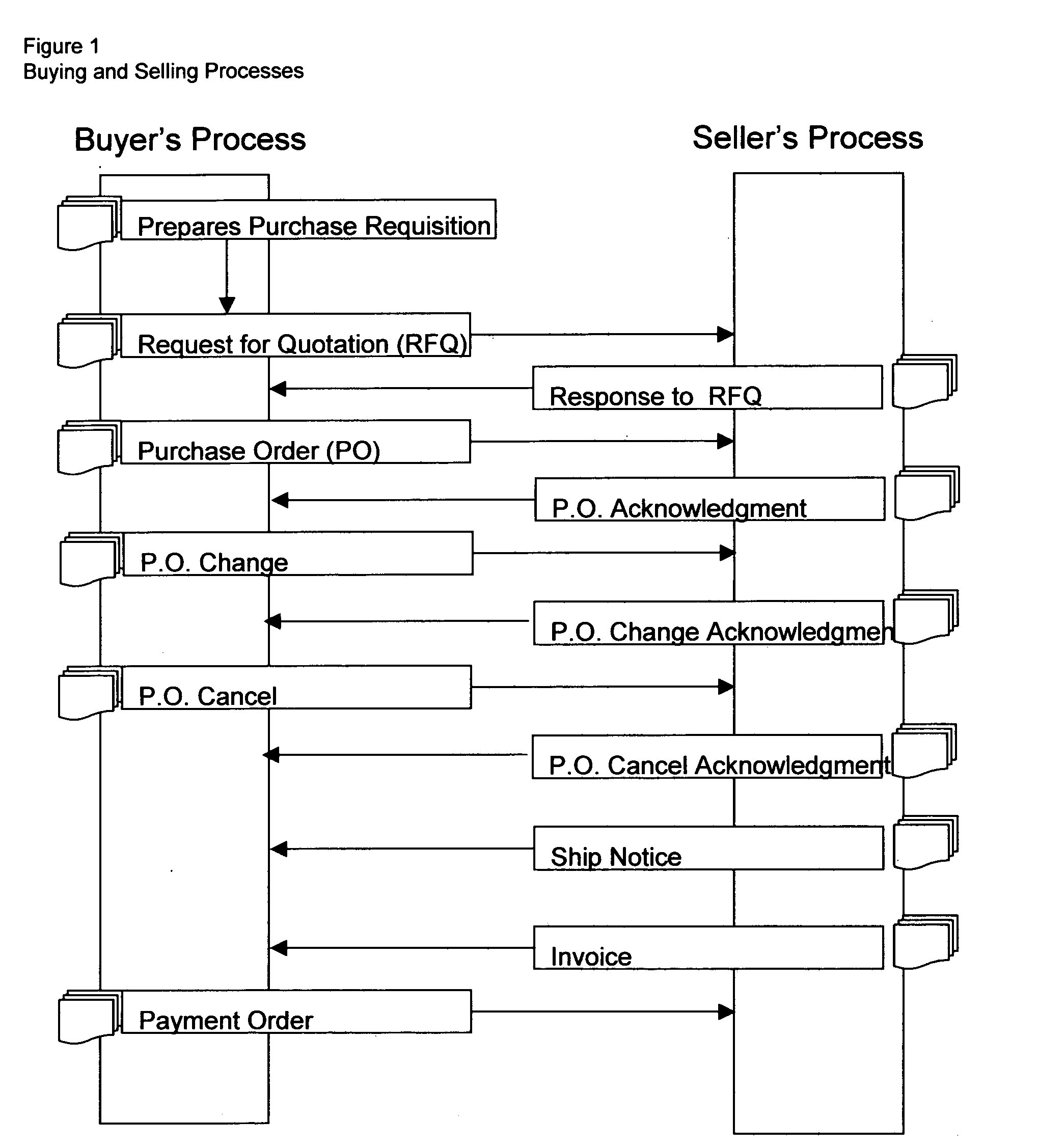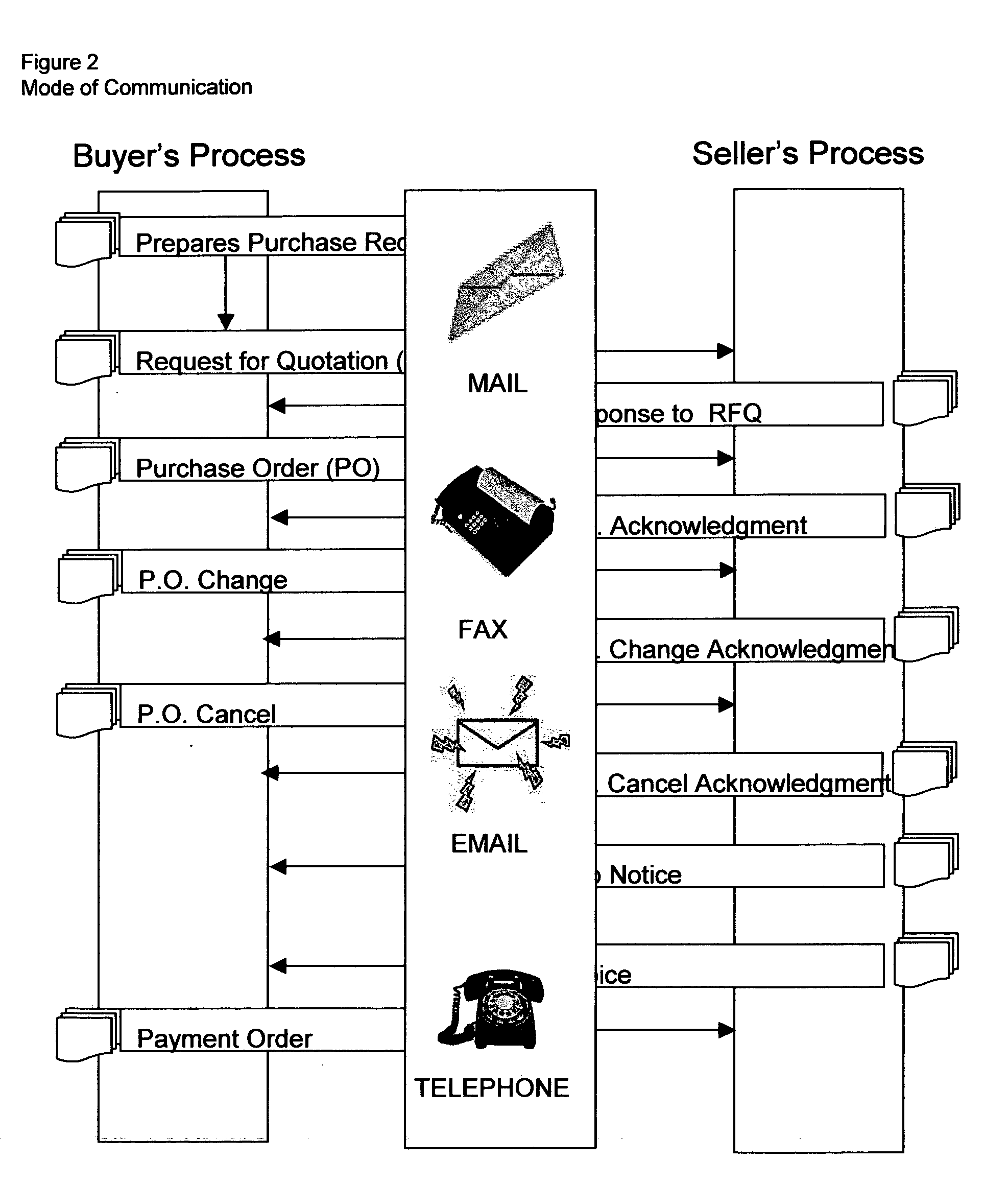Although EDI technology was able to address the electronic conversion and exchange of
business documents across business partners, there are still a lot of limitations on why EDI technology was not used by other companies.
These are some of the limitations of EDI technology.
First, EDI technology requires companies to conform to EDI standards and infrastructure requirements.
Second, EDI technology only allows the maintenance of two kinds of item codes.
There is no EDI field that allows the maintenance of global trade identification number (GTIN) and other item code standards.
Third, EDI technology only allows the maintenance of ANSI code for country code.
This
list is limited and not all are compliant to ISO defined unit of measure.
Fifth, EDI technology does not support the
processing of item code descriptions and classifications.
Sixth, EDI technology does not support electronic auctions and reverse auctions.
Seventh, EDI technology does not support processing of currency codes and descriptions.
It does not address the automated sourcing capability that allows buyers to automatically source suppliers (whether these suppliers are known or not to the buying company) capable of fulfilling the goods / services required.
Ninth, EDI technology does not address the automated offering capability that allows supplier to automatically offer their products and services to potential buyers (whether these buyers are known or not by the supplier).
Tenth, EDI technology does not allow storage of business partners and product codes and details that can be shared to other interested buyers and sellers.
There is no entity or intermediary that provides the infrastructure to
handle business partner registration, product details, and transaction details that can be shared for sourcing and offering of goods and services.
Problems arise when buying companies require 1) extended functionality to cover competitive sourcing of direct materials from reliable
list of potential suppliers (whether these suppliers are know to them or not); and 2) seamless
electronic transmission of
business documents for ERP systems being interface to the electronic marketplaces or catalogues.
It only solves the business requirement of allowing suppliers to offer their goods and services but does not solve the transactional requirement of allowing electronic documents to be seamlessly transmitted from the buyer's ERP to the seller's ERP via the marketplace where item codes, company codes and other codes are matched by the
system necessary for ERP systems to understand that these codes are referring to the same item, company, unit of measure, country, class and currency.
But the major problem lies on how companies will be able to interface their ERP systems via this electronic marketplaces and catalogues in such a way that it will allow seamless transmission of electronic documents using matched company codes, item codes, unit of measure codes and other codes.
First, Rosettanet technology requires companies to conform to Rosettanet standards and infrastructure requirements.
Second, Rosettanet technology identified only one proprietary company code.
Seventh, Rosettanet technology does not support electronic auctions and reverse auctions.
It does not address the automated sourcing capability that allows buyers to automatically source suppliers (whether these suppliers are known or not to the buying company) capable of fulfilling the goods / services required.
Ninth, Rosettanet technology does not address the automated offering capability that allows supplier to automatically offer their products and services to potential buyers (whether these buyers are known or not by the supplier).
Tenth, Rosettanet technology does not allow storage of business partners and product codes and details that can be shared to other interested buyers and sellers.
There is no entity or intermediary that provides the infrastructure to
handle business partner registration, product details, and transaction details that can be shared for sourcing and offering of goods and services.
Even though all of these aforementioned systems attempt to solve the
business requirements related to the total procurement and selling process among business partners in a fragmented manner, there is still no available total solution in the market that covers the most important capabilities to provide; 1) an
Internet based registration system and repository for business partners and products / services being sourced / offered from / to the market; 2) a matching engine where codes (i.e. company code, item code, currency code, unit of measure code, country code, etc) are extracted, stored and matched versus the business partner defined codes and global standards body defined codes therefore making it possible to electronically exchange
business documents and transactions in a seamless fashion; 3) electronic sourcing / offering of products / services; 4) support for EDI technology; 5) interface to various EBAs with or without GTIN, DUNS and
ISO standards support; 5) interface to various EBAs with or without CPN and MPN support; and 5) a total solution to cover registration of business partners,
automation of buying and selling process, exchange of electronic documents, match of codes, EDI and Rosettanet support and sourcing / offering of products and services over
the Internet.
 Login to View More
Login to View More  Login to View More
Login to View More 


